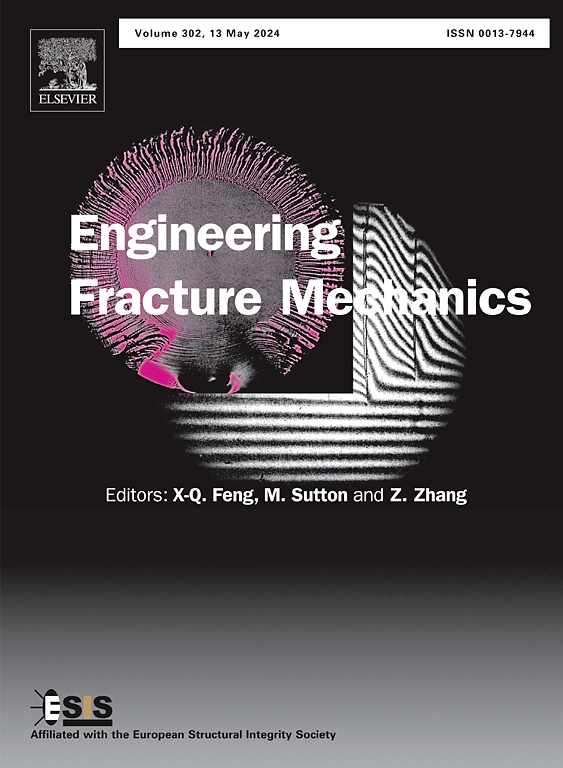Experimental characterization of cohesive laws for mode-II interlaminar fracture in geometrically scaled composites using through-thickness deformation analysis
IF 4.7
2区 工程技术
Q1 MECHANICS
引用次数: 0
Abstract
This work proposes an experimental framework to characterize a cohesive law for mode-II interlaminar fracture and demonstrates its implementation. For a size effect study, geometrically scaled end-notched flexure specimens were tested using microscopic and macroscopic digital image correlation (DIC) systems. The fracture energy was characterized using a compliance calibration method and Bažant’s type-II size effect law for comparison. In the proposed experimental framework, the DIC data were post-processed using three steps: coordinate transformation, curve fitting, and through-thickness deformation analysis. Different magnitudes of separation values were measured from different sizes at fracture loads, implying size effect and partial development of cohesive laws. Modeling and simulations were intended to validate the proposed method and demonstrate the utilization of the experimental data. Additionally, challenges related to finding a single cohesive law for geometrically scaled specimens of a single material were exposed. A single cohesive law for the scaled specimens was developed and proposed as a material property of the specimen material. The fracture energy of the single law was smaller than the energy obtained from the size effect analysis, while the sizes of fracture process zones at fracture loads were smaller than the experimental measurements. However, the global fracture behaviors of the models showed good agreement with the experimental data of the mid-size specimen while showing reasonable agreement with the other sizes. Furthermore, the single law successfully captured local fracture behaviors by showing partial cohesive zone development at the fracture loads and matching the microscopic measurement of the separation values.
基于全厚度变形分析的几何尺度复合材料ii型层间断裂黏聚规律实验表征
这项工作提出了一个实验框架来表征ii型板间骨折的内聚规律,并演示了其实施。为了研究尺寸效应,使用微观和宏观数字图像相关(DIC)系统对几何缩放的端缺口弯曲试件进行了测试。采用柔度标定法和Bažantⅱ型尺寸效应规律对裂缝能进行表征。在提出的实验框架中,DIC数据的后处理分为三个步骤:坐标变换、曲线拟合和全厚变形分析。不同尺寸的试样在断裂载荷作用下的分离值大小不同,说明尺寸效应和黏结规律的部分发展。建模和仿真旨在验证所提出的方法,并证明实验数据的利用。此外,对于单一材料的几何尺度试样,寻找单一的黏合规律也是一个挑战。建立了单一黏结规律,并将其作为试件材料的一种材料特性。单定律断裂能小于尺寸效应分析得到的能量,断裂载荷下断裂过程区尺寸小于实验测量值。模型的整体断裂行为与中尺寸试样的实验数据吻合较好,与其他尺寸试样的断裂行为吻合较好。此外,单一定律通过显示断裂载荷下局部黏聚带的发育,并与分离值的微观测量相匹配,成功地捕获了局部断裂行为。
本文章由计算机程序翻译,如有差异,请以英文原文为准。
求助全文
约1分钟内获得全文
求助全文
来源期刊
CiteScore
8.70
自引率
13.00%
发文量
606
审稿时长
74 days
期刊介绍:
EFM covers a broad range of topics in fracture mechanics to be of interest and use to both researchers and practitioners. Contributions are welcome which address the fracture behavior of conventional engineering material systems as well as newly emerging material systems. Contributions on developments in the areas of mechanics and materials science strongly related to fracture mechanics are also welcome. Papers on fatigue are welcome if they treat the fatigue process using the methods of fracture mechanics.

 求助内容:
求助内容: 应助结果提醒方式:
应助结果提醒方式:


